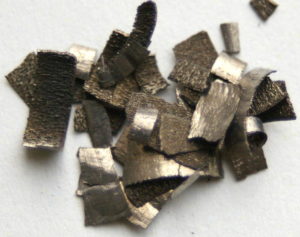Dysprosium is a chemical element with symbol Dy and atomic number 66.
Contents
Uses
- Mankind has been making the use of metals in a diverse range of applications. Anciently, human species used it in the hunting weapons, while in later stages metals entered the domestic applications, too. The modern day applications extend their use in industrial molds, sophisticated robotic instruments, defense ammunition, etc. Therefore, there is a wide range of Dysprosium uses. Its area of use includes its use in industries, medical uses, and other cosmetic benefits of the metal.
Benefits
- Dysprosium has no known biological use.
Cautions
- Like many powders, dysprosium powder may present an explosion hazard when mixed with air and when an ignition source is present. Thin foils of the substance can also be ignited by sparks or by static electricity. Dysprosium fires cannot be put out by water. It can react with water to produce flammable hydrogen gas. Dysprosium chloride fires, however, can be extinguished with water, while dysprosium fluoride and dysprosium oxide are non-flammable. Dysprosium nitrate, Dy(NO3)3, is a strong oxidizing agent and will readily ignite on contact with organic substances.
Soluble dysprosium salts, such as dysprosium chloride and dysprosium nitrate, are mildly toxic when ingested. Based on the toxicity of dysprosium chloride to mice, it is estimated that the ingestion of 500 grams or more could be fatal to a human. The insoluble salts, however, are non-toxic
Interactions
- N/A
Other names
66DY
References
Source: Wikipedia, https://en.wikipedia.org/wiki/Dysprosium#Physical_properties
Metals.compare nature, http://metals.comparenature.com/en/uses-of-dysprosium/model-78-9
Image Source: By Materialscientist at en.wikipedia, CC BY-SA 3.0, https://commons.wikimedia.org/w/index.php?curid=14772970

